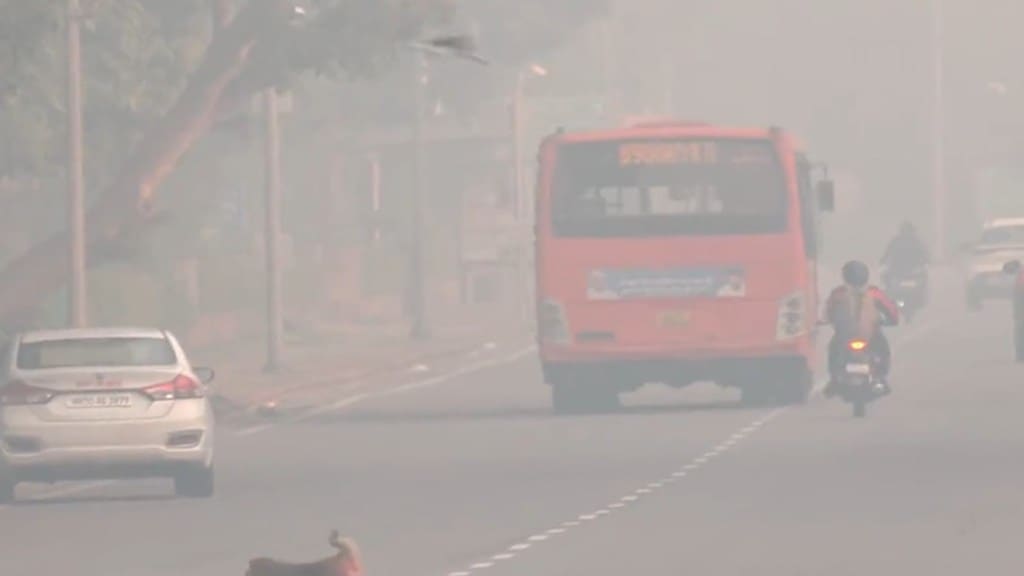A thick layer of smog engulfed the national capital as the air quality dropped from ‘poor’ to ‘very poor’ category on Monday morning, with the Air Quality Index standing at 306 as compared to 266 on Sunday, as per SAFAR-India data.
According to Sanjay Chaudhary, a cyclist at India Gate, said, “The situation is not good at all.”
Also Read:Delhi’s air quality dips to ‘Poor’, AQI jumps from 83 to 266 in a week!
“I think pollution levels have been rising in Delhi for the past 10-12 days. We can feel it in our eyes today. The smog is dense… I think the situation is not good at all. We, the cyclists, carry masks and bandanas with us, but I don’t think there is any alternative, and if you have to be on the road, you have to face it,” Sanjay Chaudhary said, ANI reported.
Another cyclist, Rahul Kundra, riding near India Gate, expressed concerns about increasing pollution, stating, “Currently, we can sense the pollution as we cycle daily, but it’s expected to worsen. Once it becomes visibly worse, we’ll have to seek alternative transportation.”
According to Monday morning data, the AQI at Anand Vihar was recorded at 309 as compared to 345 a day earlier. Meanwhile, Noida recorded a significant increase in the AQI level which stood at 322.
On Sunday morning, the overall air quality was rated as ‘poor’ with an AQI of 266, a significant increase from the AQI of 173 recorded on Saturday.
SAFAR data indicated that the air quality in Kartavya Path at India Gate was recorded at 266 on Sunday morning. In contrast, Noida reported an AQI of 290 (poor) and Gurugram 152 (moderate). Anand Vihar in New Delhi breached the ‘very poor’ category with an AQI of 345, while ITO had an AQI of 309, New Moti Bagh recorded an AQI of 360, and Dwarka Sector-8 had an AQI of 313.
Also Read:Delhi pollution: Centre’s action plan to check air pollution in NCR comes into effect
As per the Graded Response Action Plan (GRAP), stage II is initiated in the NCR region when the average AQI either reaches or is anticipated to reach a value of 301.
Delhi’s Environment Minister, Gopal Rai, has also scheduled a meeting involving all the departments responsible for executing the pollution control measures outlined in the central government’s plan.
What is Air Quality Index (AQI)?
The Air Quality Index (AQI) is a vital tool for effectively communicating air quality status in an easily understandable manner to the public. It consists of six AQI categories: Good, Satisfactory, Moderately Polluted, Poor, Very Poor, and Severe.
Each category is determined based on the levels of ambient concentrations of air pollutants and their potential health impacts, known as health breakpoints. According to the AQI scale, air quality falls into the following ranges: 0 to 50 is “good,” 51 to 100 is “satisfactory,” 101 to 200 is “moderate,” 201 to 300 is “poor,” 301 to 400 is “very poor,” and 401 to 450 is “severe.”
(With ANI inputs)
